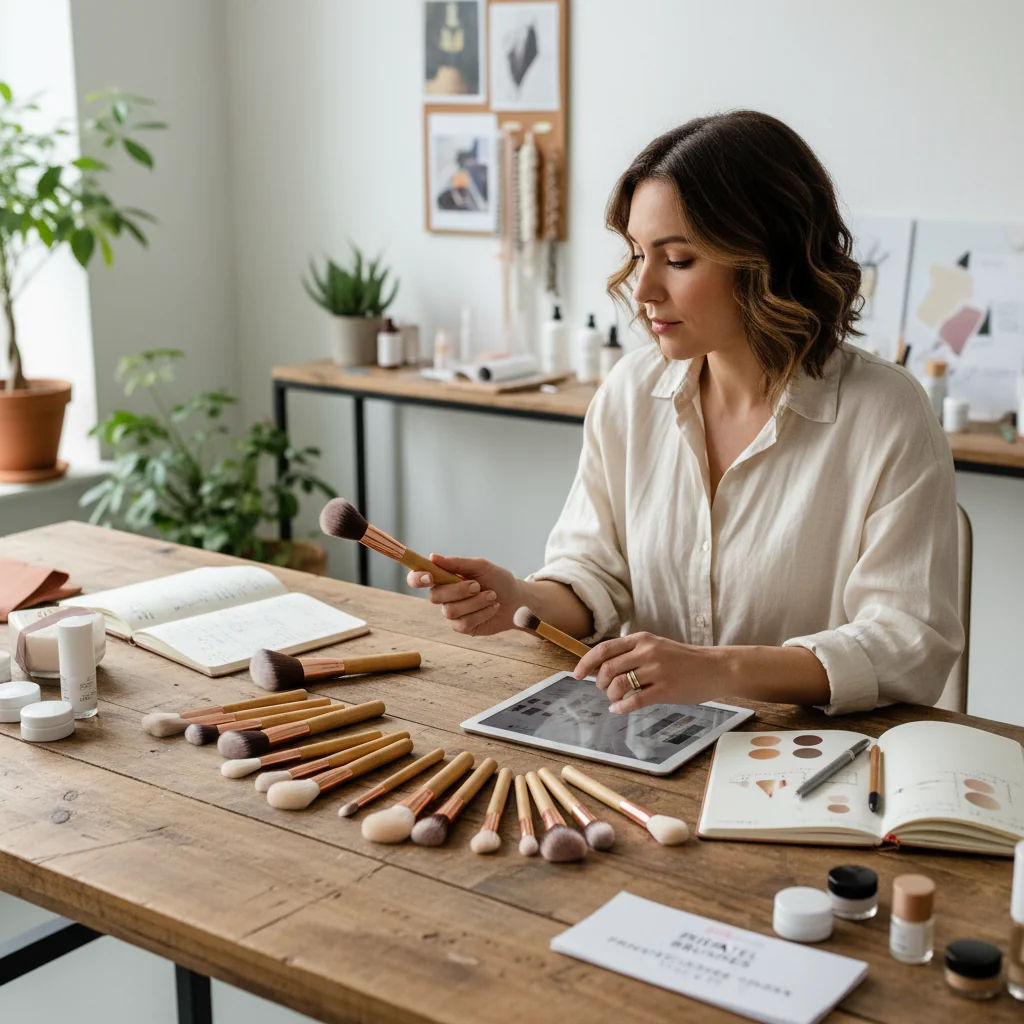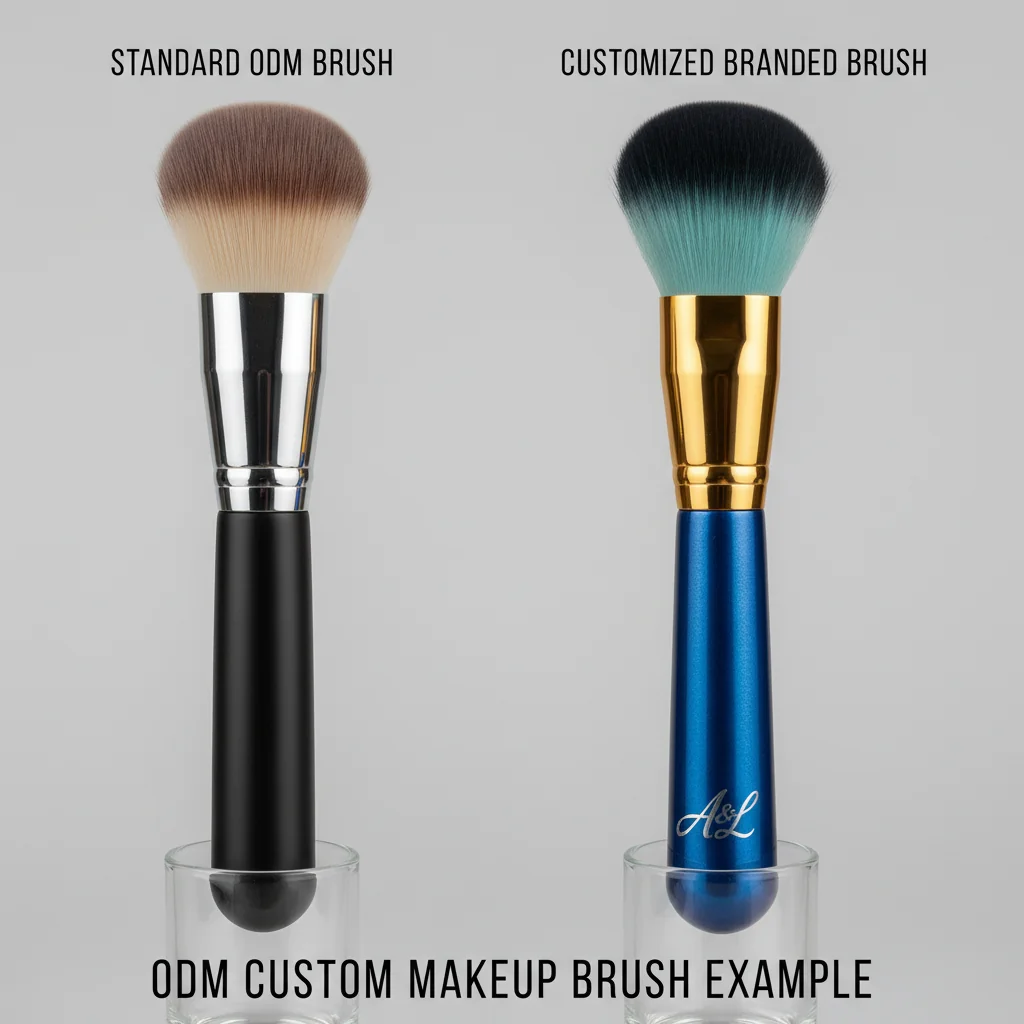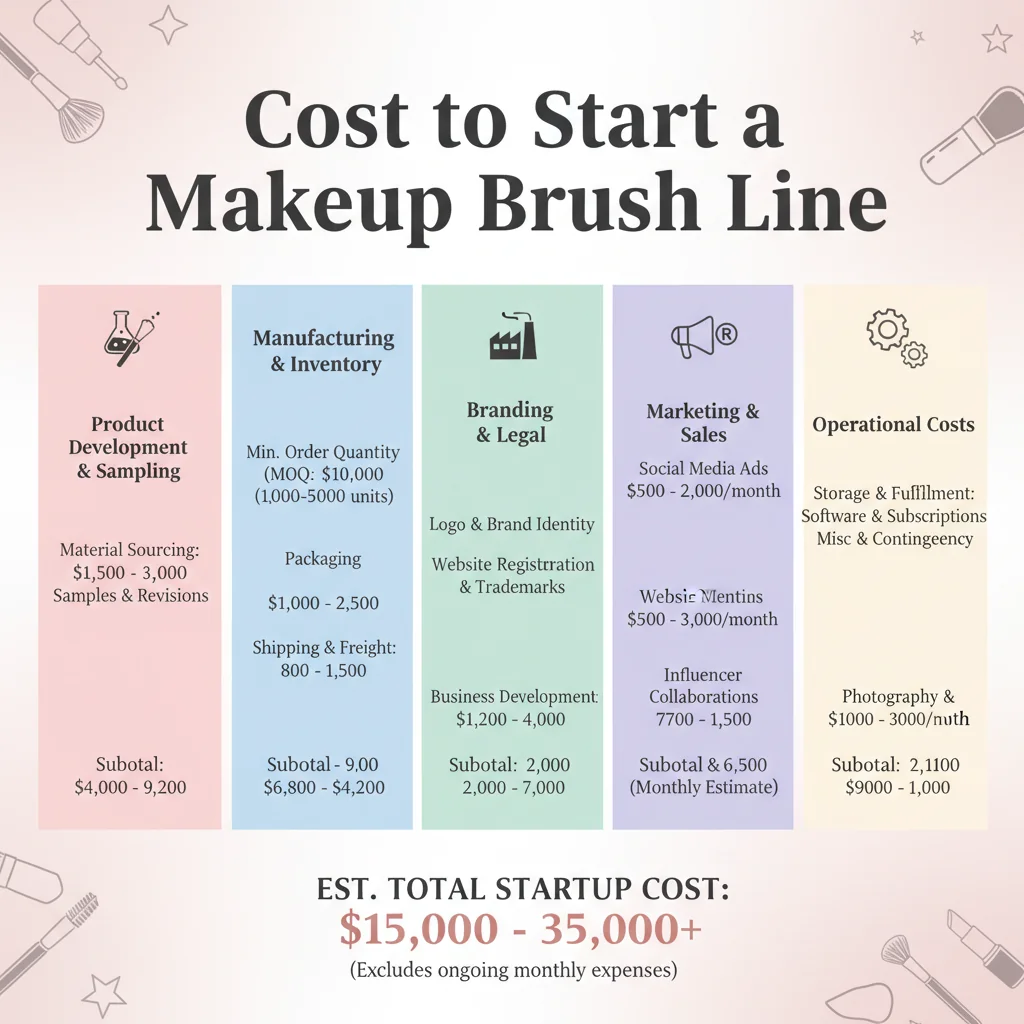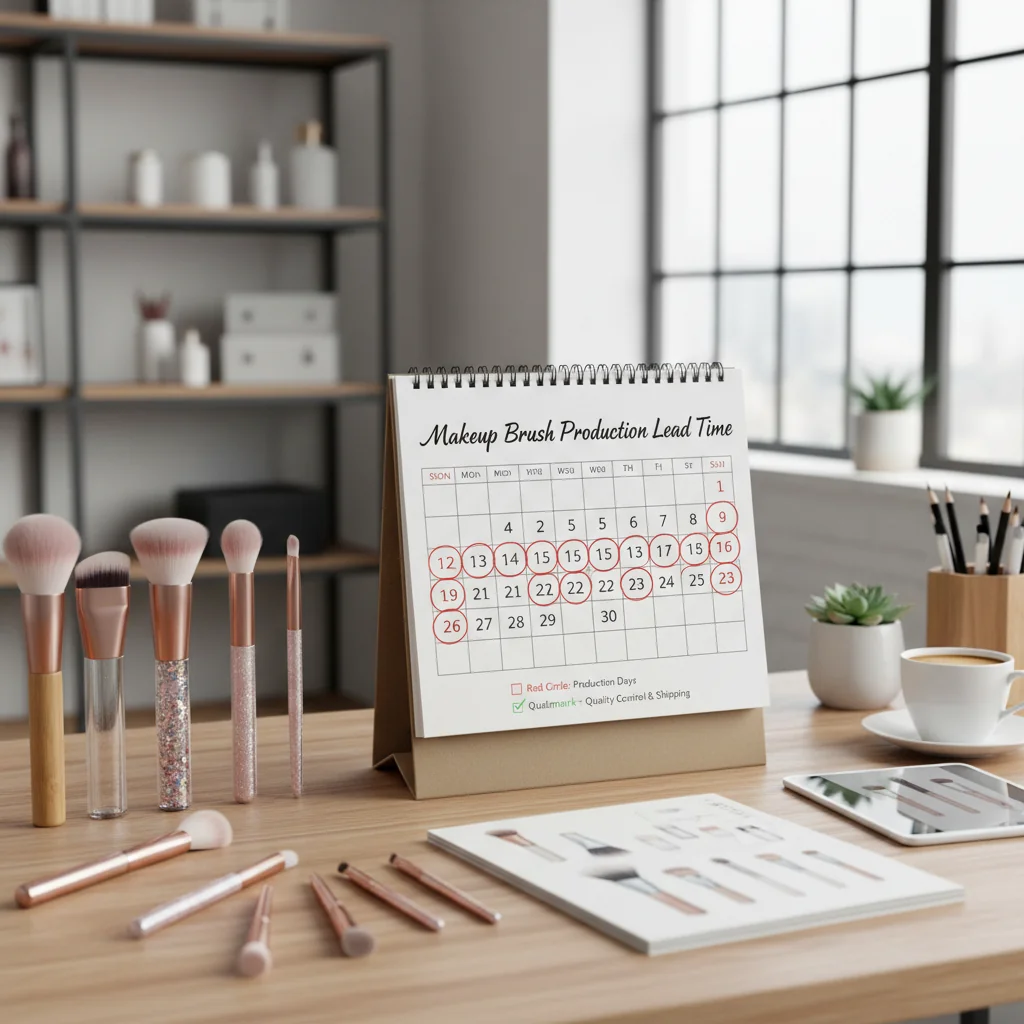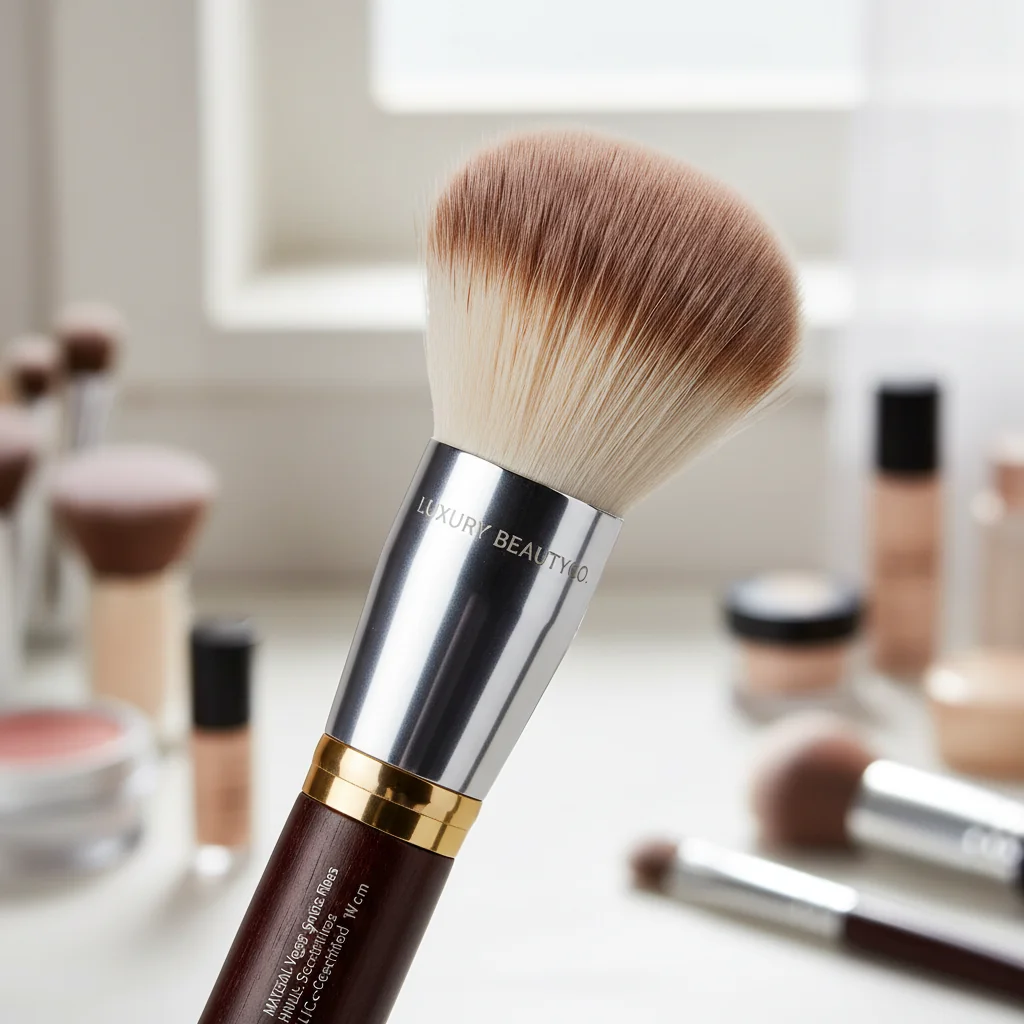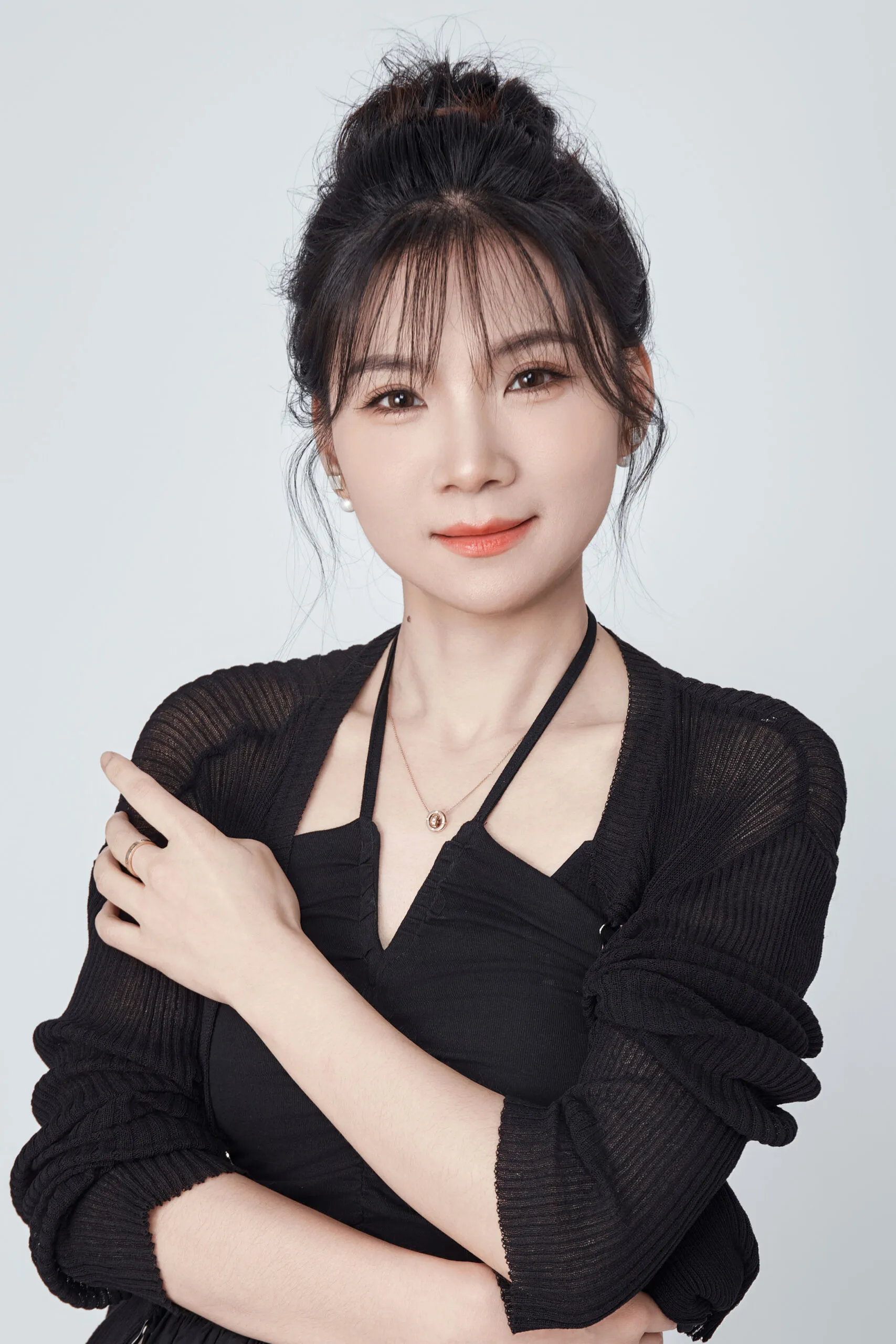You have a brilliant vision for your own makeup brush line, but the path to production feels overwhelming. Big factories don’t seem interested in small brands, leaving you feeling stuck.
To create custom makeup brushes for your brand, the smartest path is to start with an ODM supplier1. You can select from their existing catalog, add your logo and colors, and launch in weeks. This lets you test the market with lower costs and risk before scaling up.
When I first started on the factory floor, I saw so many brand founders struggle. They had amazing ideas but got lost in the complexities of manufacturing. They were worried about high minimum orders, uncertain quality, and losing their investment. It’s why I started Brushino—to make this process clear and achievable for entrepreneurs like you.
This guide isn’t just a list of steps. It’s the exact roadmap I share with my clients, founders of growing beauty brands, to help them launch successfully. We will walk through the fastest way to market, what it really costs, and the key quality details that will make your customers love your brushes. Let’s build your brand, the smart way.
All makeup brush factories require a minimum order of 10,000 brushes per style.False
This is false. While some large factories have high MOQs, many flexible OEM/ODM suppliers like Brushino offer MOQs as low as 500 pieces for simpler designs, making it accessible for new brands.
Using an ODM supplier can reduce your product launch time from months to just a few weeks.True
This is true. ODM (Original Design Manufacturing) uses pre-developed and tested brush models, eliminating the long design and tooling phases required for fully custom OEM projects.
What’s the fastest way to launch custom makeup brushes under my brand?
You want to get your brushes into customers’ hands quickly, but you’re worried about long development times. Missing a trend or a seasonal launch window can kill your momentum before you even start. I’ll show you the proven strategy to launch in weeks, not months.
The fastest route is to start with ODM (Original Design Manufacturing). You pick proven brush styles from a supplier’s catalog, then customize the logo, colors, and packaging. This minimizes development time and lowers risk, enabling a launch in just a few weeks.
I always advise new brand founders to think of their launch in two stages. This is the safest and most capital-efficient way to grow.
Stage 1: The ODM Pilot
ODM is your speed-to-market solution. A good supplier has a catalog of brush heads that are already designed, tested, and ready for production. Your job is to be the creative director. You choose the brush shapes you need for your first collection, and then we customize them to fit your brand. This includes:
- Handle Color: We can match your brand’s Pantone colors.
- Ferrule2 Finish: Choose from classic silver, gold, rose gold, or even custom colors.
- Logo Printing: Your brand name and logo are added via hot-stamping or silk-screening.
This approach lets you launch a high-quality, branded product in as little as 15-30 working days after you approve the samples. You get to test your concept in the real world without a huge upfront investment in custom molds.
Stage 2: The OEM Scale-Up
Once your ODM brushes are selling well, you have data. You know which brushes are your "hero" SKUs. Now it’s time for OEM3 (Original Equipment Manufacturing). This is where you get full control. With OEM, we can create completely unique brushes just for your brand—exclusive shapes, custom-blended fibers, and unique ergonomic handles. It takes longer and has higher MOQs, but it gives you a product that no one else has.
| Feature | ODM (Start Here) | OEM (Scale Here) |
|---|---|---|
| Speed | Fast (Weeks) | Slower (Months) |
| Cost | Lower Upfront | Higher Upfront |
| MOQ | Lower (~500+ pcs) | Higher (~1,000+ pcs) |
| Customization | Logo, Color, Finish | Total (Shape, Fiber, etc.) |
| Best For | Market testing4, speed | Brand exclusivity, scaling |
This staged roadmap—ODM pilot to OEM scale-up—is the strategy I’ve seen work for hundreds of brands. It protects your cash flow and lets you make decisions based on real sales data.
OEM and ODM are just different names for the same manufacturing process.False
They are fundamentally different. ODM customizes existing designs for speed and low cost. OEM creates a completely new product from scratch for total brand exclusivity, which involves higher costs and longer timelines.
You can use the ODM process to validate market demand for specific brush shapes before investing in more expensive, fully custom OEM tooling.True
This is a core benefit of the ODM-first strategy. It allows brands to test which brushes resonate with their audience at a lower risk and cost, providing valuable data for future OEM development.
How much does it cost to start a private label makeup brush line?
You need a clear budget to launch your brush line, but it’s hard to find real numbers. You’re worried that hidden fees and unexpected charges will destroy your profit margins. I’ll break down the typical costs so you can plan your investment with confidence.
Expect a startup budget from $2,120 to $11,200+. This covers initial development, a first production run, branding, and basic marketing. Unit prices often start around $1.50 per brush for simple designs, with costs increasing for premium materials and complex finishes.
The final price on your invoice is more than just the cost per brush. As a founder, you need to understand your "Total landed cost5." This is the true cost to get the product from the factory to your warehouse, ready to sell. I always walk my clients through these numbers so there are no surprises.
Key Cost Drivers for Your Brushes
First, let’s look at what makes one brush more expensive than another. The main factors are:
- Tuft (Fibers): This is the biggest cost driver. Premium, high-performance engineered fibers or those with special treatments (like antimicrobial) cost more than basic synthetics.
- Ferrule: The metal part. Standard aluminum is cost-effective. Heavier brass or custom-shaped ferrules add to the cost.
- Handle: Simple wood or plastic handles are the baseline. Sustainably sourced FSC-certified wood, heavy-set resin, or unique finishes will increase the price.
- Branding & Finish: A simple one-color logo is standard. Multi-color logos, laser engraving, or complex handle finishes add cost.
Your Total Landed Cost Checklist
Beyond the unit price, your budget must account for:
- Sampling: Getting physical samples to approve.
- Tooling/Molds: Only for OEM projects with unique shapes.
- Packaging: Individual sleeves, pouches, or retail boxes.
- Third-Party QA: Optional, but recommended for large orders.
- Certifications: Fees for specific documentation if required.
- Shipping (Freight): The cost to ship from the factory.
- Duties & Taxes: Import fees for your country.
A typical small launch might budget $2,000 for manufacturing (e.g., 1,000 brushes at $2/each), plus another $1,000-$5,000+ for packaging, shipping, photography, and initial marketing. Starting with a focused set of 5-8 essential brushes is a great way to manage these initial costs.
The handle is the most expensive component of a makeup brush.False
The tuft, which consists of the fibers, is almost always the most significant cost driver. The quality, density, and type of fiber (e.g., premium engineered synthetics) have the biggest impact on the unit price.
Your 'landed cost' includes not just the factory price per brush, but also shipping, import duties, and packaging.True
Correct. To accurately calculate your profit margins, you must account for all expenses required to get the product from the factory into your sellable inventory. This is the total landed cost.
What MOQs and lead times should B2B buyers plan for?
High MOQs (Minimum Order Quantities6) and long lead times can feel like major roadblocks. You’re afraid of being forced to buy thousands of brushes you might not sell, or worse, missing your launch date entirely. Let’s demystify the numbers and talk about how to make them work for you.
MOQs can range from 500 pieces for simple ODM brushes to 5,000+ per style for premium OEM lines. A typical lead time is 15–30 working days after you approve the final sample. More complex OEM projects with new molds will take longer.
When I started my own trading company, my goal was to help brands like yours, brands that the giant factories often overlook. That means offering flexibility. MOQ and lead time aren’t always fixed numbers; they are part of a negotiation that depends on the complexity of your project.
Understanding MOQ Variation
Why can one supplier offer 500 pcs while another demands 5,000? It comes down to the production process.
- Low MOQ (~500 pcs): This is usually possible for ODM brushes using standard components. For example, a black wooden handle with a stock aluminum ferrule and a common brush head shape. The factory already has these materials on hand.
- High MOQ (~1,000-5,000+ pcs): This applies when you need custom elements. If we need to produce a custom Pantone color for the handle, order a special type of fiber, or create a new mold for a unique ferrule shape, the material suppliers have their own minimums. The factory’s MOQ reflects these supply chain requirements.
How to Reduce Your MOQ Risk
You don’t have to order 1,000 of every single brush in your 10-piece collection. Here are some smart strategies I use with my clients:
- Bundle into Sets: Create a 5-piece "Eye Essentials" set. This allows you to meet the MOQ for the shared packaging (like a pouch or box) while ordering fewer of each individual brush.
- Standardize Components: Use the same handle style and ferrule color across multiple brushes in your line. This allows the factory to produce them in one larger batch, reducing the per-style minimum.
- Phase Your Launch: Start with a core "Face Set" of 4-5 brushes. Once those are successful, launch your "Eye Set" or "Finishing Touches" brushes in a second phase.
Lead time starts after you sign off on the pre-production sample. A 30-day lead time means 30 working days for production. The sampling and design phase before that can take several weeks, so be sure to factor that into your overall timeline.
Lead time begins the day you first contact a manufacturer.False
Lead time refers specifically to the production period. It begins only after you have approved all designs and pre-production samples and have officially placed your purchase order.
Bundling multiple brush SKUs into a single set can help you meet a factory's MOQ requirements more efficiently.True
This is a smart procurement strategy. By creating a set, you are placing a larger order for the overall package, which can give you more flexibility on the quantities of the individual brushes inside.
Which materials and specs matter most for application performance and durability?
You see long lists of technical specs, but you’re not sure what makes a brush feel luxurious and perform flawlessly. Choosing the wrong materials can lead to customer complaints about shedding, scratchiness, or brushes that fall apart. I’ll show you exactly where to focus for pro-level quality.
For top performance, focus on four things: engineered synthetic fibers matched to the makeup formula, a precisely shaped tuft, a robust ferrule with strong glue, and a well-balanced handle. Always validate quality with pull tests, shedding checks, and wash cycles.
A beautiful brush is great, but a brush that works beautifully is what creates a loyal customer. From my years on the factory floor, I learned that true quality comes from getting the details right in four key areas. When you write your product specifications, focus on these.
1. The Tuft: Fibers, Density, and Shape
This is the heart of the brush. Today’s best brushes use engineered synthetic fibers (like PBT or nylon), which are cruelty-free and can be designed to outperform animal hair.
- Fibers: Ask for high-performance vegan fibers. For an added selling point, you can request antimicrobial-treated fibers to help keep brushes fresher for longer.
- Density & Shape: This is critical. A fluffy, less dense powder brush is perfect for a light dusting of setting powder. A dense, angled brush gives you precise contour application. Your supplier should help you match the density and shape to each brush’s job.
2. The Ferrule: The Unsung Hero
The ferrule is the metal piece that connects the handle to the tuft. Its job is to hold everything together securely.
- Material: Aluminum is the industry standard and is lightweight and durable. Brass is a heavier, more premium option.
- Adhesive: This is a hidden but vital spec. Insist on a strong, waterproof epoxy adhesive system. This is what prevents shedding and ensures the brush head won’t come loose after washing.
3. The Handle: Balance and Feel
The handle determines how the brush feels in your hand.
- Material: Wood is a classic choice; look for FSC-certified wood to make a sustainability claim. Bio-resins and recycled plastics are also becoming popular eco-friendly options.
- Balance: A well-made brush should feel balanced, not top-heavy or bottom-heavy. The weight and length should be comfortable for controlled application.
4. Quality Validation: Trust but Verify
Before you approve mass production, you must test your samples.
- Pull Test: Gently tug on the bristles. A few may come out initially, but it shouldn’t continuously shed.
- Shedding Check: Swirl the brush vigorously on your hand or a surface.
- Wash Test: Wash the brush with soap and water at least three times to check for color bleeding, shedding, and to ensure the tuft retains its shape after drying.
Animal hair is always superior to synthetic fibers for makeup brushes.False
This is an outdated belief. Modern engineered synthetic fibers are often designed to be more consistent, durable, hygienic (less porous), and can be specifically textured to pick up and apply powder or cream products more effectively than their animal hair counterparts. They are also 100% cruelty-free.
FSC certification ensures that the wood used for brush handles comes from responsibly managed forests.True
Correct. If sustainability is a key part of your brand identity, asking your supplier for FSC-certified wood and the corresponding documentation is a crucial step to making an auditable environmental claim.
Conclusion
Launching your own makeup brush line is within your reach. By starting with a smart ODM pilot and focusing on the quality specs that matter, you can build your brand with confidence.
References
-
Understanding ODM suppliers can help you streamline your product launch and reduce costs. ↩
-
Understanding the ferrule’s function can help you choose durable and effective brushes. ↩
-
Learn how OEM can provide exclusivity and customization for your makeup brush line. ↩
-
Market testing strategies can help you validate your product before a full launch. ↩
-
Understanding total landed cost is crucial for accurate budgeting and profit margin calculations. ↩
-
Knowing MOQs helps you plan your budget and avoid overcommitting on inventory. ↩
